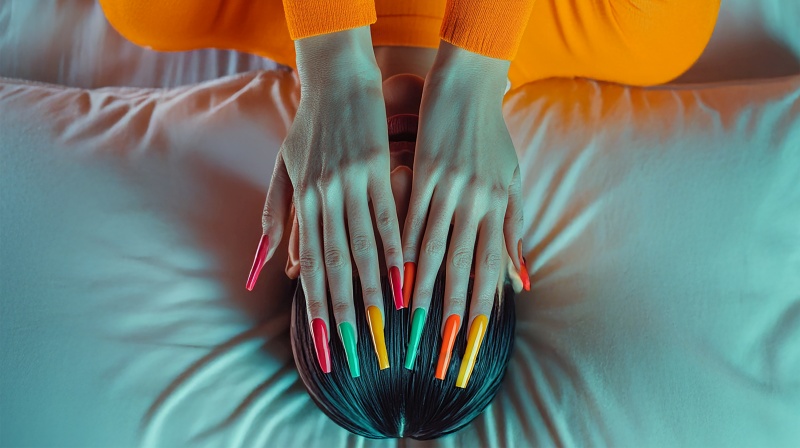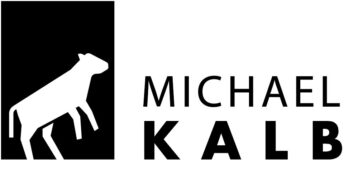Feature Film / approx. 90 Min. / Production planned in 2026
Two middle-aged women, gradually losing their ability to bear life, are swallowed by earth and re-emerge on the other side of the world with the chance to start all over again.

Summary of The Inverted Well:
- The Inverted Well depicts a dystopian world in which beauty, control and consumption blend into a complex power structure. The film opens with an unsettling image: a prison yard is empty, silent, pervaded only by the sound of wailing sirens – the first sign of a world in which order reigns, but hardly any life in it. There are no prisoners to be seen in the neighbouring cells, but the beds lay upside down on the floor.
The narrative follows two women, Nina and Anna, whose lives are marked by symbolic and physical journeys through underworlds that reflect the state of society as well as their own alienation.
Nina – A woman in a society of surveillance
Nina, around fifty, runs a nail salon in an authoritarian state. She suffers from insomnia. Her customers: exhausted women with bald heads, but overly long, claw-like fingernails – both stylised and weapon-like. The scene is characterised by chronic power shortages: during the reoccurring power cuts, Nina continues to work in the dark – almost blindly, with routine hand movements. The outside world is dominated by violence and kidnapping, while the inside focusses on the perfect surface. One night, her bed sinks into a seemingly biological tunnel – Nina is pulled into the underworld and ends up upside down with her bed in a dull government office, where she meets Anna.
The people there seem motionless and apathetic, which reinforces Nina's isolation. Here she meets Anna, a successful marketing woman who is also plagued by insomnia and inner emptiness.
Anna – The free world as an illusion
Anna lives in a seemingly liberal world: marketing, podcasts, gluten-free cakes, meditation – but she, too, faces insomnia and inner exhaustion. In complete contrast to Nina's surroundings, Anna's world is brightly lit: Enormous screens beaming incessantly, advertisements running nonstop, energy seems to be infinitely available here. This continuous sensory overload seems comfortable at first, but grows increasingly aggressive and controlling. Anna is also swallowed up at night and emerges with her bed, positioned upside down like a newborn, on the other side of the world. In a prison cell, she encounters women wearing the claws that Nina designs in her nail salon. The two worlds begin to intersect – the dark seeps into the light world, and vice versa.
A film-within-a-film and the power of nails
A seemingly casual remark by a customer in which she asks herself: "What would the world have been like if women had been born with strong, long nails right from the start? – an alternative universe suddenly unfolds in the nail salon. In animated scenes, foetuses are born with natural claws – female dominance is the norm.
The satirical film-within-a-film shows an inverted world order: women hunt, rule and give birth, whilst men fight for equality – with artificially extended nails. The absurd exaggeration reflects pressuring beauty standards, restrictive societal roles and an ideology perverted by the media.
Choreographies of resignation – Encounters with the angels
Nina sinks into the underworld again and meets bird-like angelic beings – addicted to opium and self-satisfied, barely human. They dance, consume and resign themselves. Their attempt to revolt seems long gone. Nina approaches them with a mixture of anger and care – she files their claws, a moment between submission and control. Back in her studio, the surreal reality continues: anarchy outside, meticulous care inside. And over and over again: a power cut.
Lilie and the embryo egg
A customer of the nail salon, Lily, pregnant and previously calm, suddenly bursts into tears. She fears bringing a child into this world. Nina soon discovers a hidden egg under a floor tile – a luminous embryo. In a later scene, the stink bug ‘Luca Bazuca’ presents these embryos like products: They make it possible to postpone birth – ‘until better times come’. In the 'free world,’ the egg is advertised like a lifestyle gadget – brightly glowing, futuristic, almost sacred. The hope for a future becomes a commodity, a symbol of the belief in progress – fuelled by an infinite power supply.
Anna - the dissolution of order
Anna drifts deeper into psychological disorientation. Her flat is covered in advertisements, screens and online appointments. The electricity flows without interruption, but instead of warmth it brings the cold, noise and constant stress. The excess is blinding. The emotional distance to her daughter Elena grows, beauty standards are weaponised. When Anna dives into a techno tunnel in the underworld, she witnesses grotesque stink bugs on catwalks – an apocalyptic fashion show. Amidst all the imagery: Emptiness. The violence lives on – subtly, systematically.
Another encounter – the nail salon as a bordering space
In the end, Nina and Anna meet again in the free world. Their gazes: silent, but aware. Nina asks: What is life like in the free world? As she files Anna's nails, it becomes apparent that the dividing border between the two worlds has fallen.
Women have only been visiting the underworld for 200 years!
The narrative jumps 200 years into the past to Louise Otto-Peters, a pioneer of the women's movement. After the imposition of a ban on her journalistic work, Louise is catapulted into a prison cell in 19th century Iran, where she meets the poet Tahireh Qurrat al-Ain, also a pioneer in her world. Together they discuss oppression, resistance and the right to one's own voice.
A mishap causes Tahireh to trigger a mechanism that pulls the bed into the ground, while Louise tries to explain to the prison guards that she has no idea where Tahireh has disappeared to. A short time later, however, Tahireh appears in Louise's editorial office and begins to write as if she were impersonating Louise herself. The film ends with a revolutionary montage in which women crawl out from beneath upside-down beds and change is set in motion.
The closing credits honour Louise Otto-Peters and Tahireh Qurrat al-Ain, two historical resistance fighters.
Crew:
Director: Narges Kalhor
Script: Narges Kalhor und Aydin Alinejad
Commissioning Editor ZDF: Lucia Haslauer
A coproduction of ZDF / Das kleine Fernsehspiel.
The project was selected for the Berlinale Co-Production Market 2025.
Script funded by ![]() FilmFernsehFonds Bayern.
FilmFernsehFonds Bayern.


![]()
